### What is On-Page SEO? And Why Does It Matter?
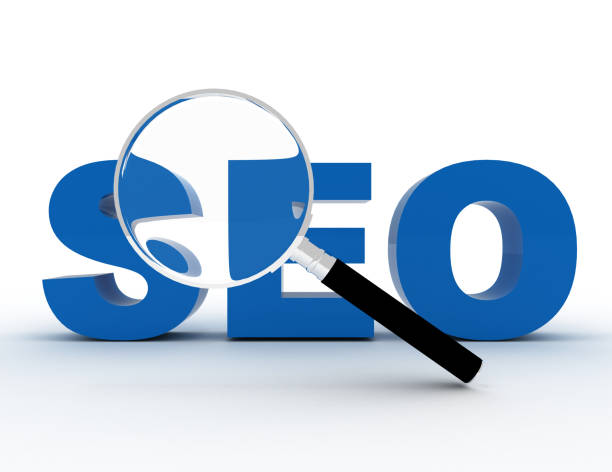
**On-Page SEO** refers to the set of actions you take within your own website to improve the site’s ranking in search engines like Google. These actions include optimizing content, site structure, title tags (#title tags), meta descriptions (#meta descriptions), internal links (#internal links), and many other things.
The importance of **On-Page SEO** stems from the fact that search engines rely on signals on web pages to understand and rank website content. By optimizing these signals, you help search engines better understand your content and, as a result, improve your site’s ranking in search results. Learn more about SEO here.
A website with strong **On-Page SEO** has a better chance of attracting organic traffic (#organic traffic), which in turn can lead to increased sales, increased brand awareness, and achieving business goals. Good **On-Page SEO** also means a better user experience, as optimized websites are usually faster, more user-friendly, and more mobile-friendly. A site optimized with **On-Page SEO** will improve your site’s ranking in Google.
>Are you bothered by losing customers due to the outdated look or slow speed of your online store? The Resaweb expert team solves these problems with professional online store design!
>✅ Increase customer trust and brand credibility
>✅ Blazing speed and great user experience
>Get a free consultation with Resaweb now ⚡
Keyword Research – The First Step in On-Page SEO
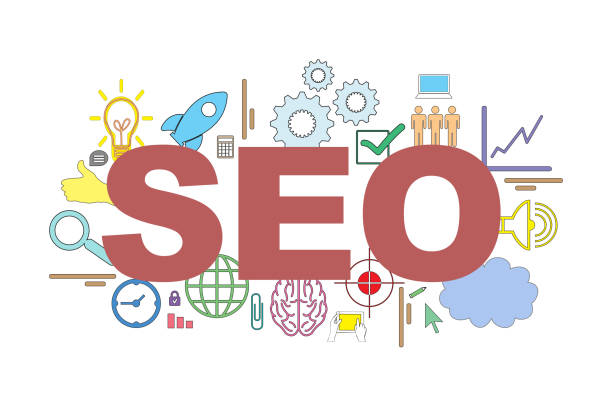
Keyword research (#keyword research) is the cornerstone of any successful **On-Page SEO** strategy. You need to identify the words that your target audience searches for to find information related to your business.
To conduct keyword research, you can use various tools such as Google Keyword Planner, Ahrefs, SEMrush, and Moz Keyword Explorer. These tools help you find search volume, competition, and related keywords. After identifying the appropriate keywords, use them naturally and purposefully in your website content. Keep in mind that excessive use of keywords (keyword stuffing) can negatively affect your site’s ranking. Long-tail keywords (#long-tail keywords) can also drive highly targeted traffic to your site. Don’t neglect these words.
Try to use keywords in page titles, meta descriptions, headings and subheadings, body text, and image alt text (#alt text). Always remember that your content should be valuable and engaging for users, not just for search engines. Gain a better understanding of keywords with these methods.
Optimizing Page Titles and Meta Descriptions
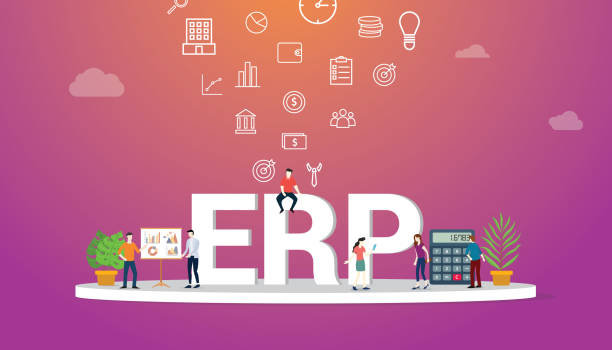
Page Titles (Title Tags) and Meta Descriptions are two important elements in **On-Page SEO** that are displayed in search results. Page titles appear as clickable links in search results and should be attractive, relevant, and contain the main keyword.
Meta descriptions are summaries of the page content that appear below the title in search results. Meta descriptions should be compelling enough to encourage users to click and should also accurately describe the page content. The length of page titles should be less than 60 characters, and the length of meta descriptions should be less than 160 characters. Make sure that each page of your website has its own unique title and meta description. Use relevant keywords in the title and meta description, but avoid filling them with keywords.
Proper use of title and meta tags can help improve your site’s click-through rate (#click-through rate (CTR)). A high click-through rate tells search engines that your page is relevant and engaging for users and can lead to improved site ranking.
The following table can be used as an SEO guide in this section:
“`html
| Element | Description | Suggested Length |
|---|---|---|
| Page Title (Title Tag) | The title of the page that is displayed in search results | Less than 60 characters |
| Meta Description | A summary of the page content that is displayed below the title in search results | Less than 160 characters |
“`
Optimizing Content for Search Engines and Users
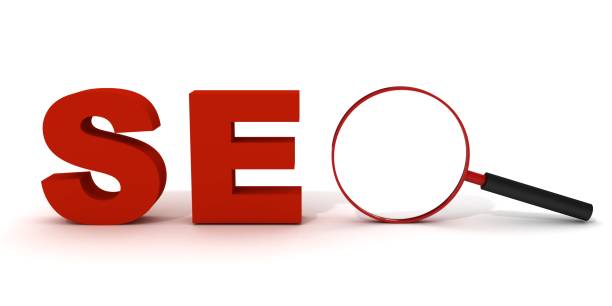
Content (#content) is king! High-quality, valuable, and relevant content is key to success in **On-Page SEO**. Search engines and users are both looking for content that answers their questions, solves their problems, and provides useful information.
To optimize content, you must first know your target audience and understand their needs and interests. Then, create content that is specifically designed for them. Use relevant keywords in your content, but avoid overdoing it. Structure your content well and use headings, subheadings, paragraphs, and lists for readability. Images, videos, and infographics can make your content more engaging and interactive. Pay attention to this point.
Update your content regularly and add new and relevant information to it. Old and outdated content can negatively affect your site’s ranking. Make sure your content is unique and original, and avoid copying other people’s content. Copied content can lead to your site being penalized by search engines.
>How much does losing business leads due to a non-professional site cost you? Solve this problem forever with professional corporate website design by Resaweb!
>✅ Increase the credibility and trust of potential customers
>✅ Easier to attract new business leads
>⚡ Get a free consultation now!
Proper URL Structure and Its Importance in SEO

The URL structure (#URL structure) of your website plays an important role in **On-Page SEO**. URLs should be short, descriptive, and contain relevant keywords. Avoid using long and complex URLs that contain incomprehensible numbers and letters.
The best practice is to create URLs using the main keywords of the page and use hyphens (-) to separate words. For example, instead of using a URL like `example.com/page?id=123`, use a URL like `example.com/seo-internal-optimization`. The URL structure should be logical and organized and help users and search engines easily navigate your site.
Avoid creating duplicate URLs and make sure that each page of your website has its own unique URL. If you need to change the URL of a page, use a 301 redirect (#301 redirect) to direct users and search engines to the new URL. A 301 redirect tells search engines that the page has been permanently moved to the new URL, and the SEO value of the old page is transferred to the new page. The correct URL structure improves SEO.
Optimizing Images for SEO

Images (#images) can play an important role in the attractiveness and engagement of your content, but if they are not properly optimized, they can slow down page loading and negatively impact **On-Page SEO**.
To optimize images, you must first reduce their file size without significantly reducing their quality. Use appropriate image formats such as JPEG for photos and PNG for graphics. Use online image compression tools or image editing software to reduce the file size of images. The image file name should be descriptive and contain relevant keywords.
For example, instead of using a file name like `IMG_1234.jpg`, use a file name like `seo-internal-optimization.jpg`. Fill in the Alt tag (#alt tag) of the images. The Alt tag is text that is displayed if the image does not load and is also used by search engines to understand the content of the image. The Alt tag should be descriptive, concise, and contain relevant keywords. By doing this, you have also performed image SEO.
Internal Linking – Creating a Strong Structure for the Site

Internal linking (#internal linking) refers to the process of linking to other pages of your own website from within the content of other pages. Internal linking helps search engines understand the structure and hierarchy of your site and identify more important pages.
It also helps users easily navigate your site and find relevant content. For internal linking, use appropriate anchor text (#anchor text). Anchor text is the text that is linked to another page and should be descriptive and contain relevant keywords. Avoid linking to unrelated pages or using generic anchor text such as “click here”. Internal linking in **On-Page SEO** helps improve your site’s ranking.
For example, pay attention to this table:
“`html
| Feature | Description |
|---|---|
| Anchor Text | Text that is linked to another page |
| Relevance | Links should be given to related pages |
| Number of Links | The number of links should be logical and balanced |
“`
Regularly check your internal links and fix broken or outdated links. Strategic and targeted internal linking can help improve your site’s **On-Page SEO** and drive more organic traffic to your site.
Optimizing Site Loading Speed

Site loading speed (#page speed) is an important factor in **On-Page SEO** that directly affects user experience and site ranking in search engines. Users expect web pages to load quickly, and if a site is slow, users are more likely to leave it.
Search engines also prefer faster sites and give them a better ranking. To optimize site loading speed, you must first test your site’s speed using tools such as Google PageSpeed Insights, GTmetrix, and WebPageTest. These tools help you identify your site’s speed problems and find solutions for improvement. Some speed optimization solutions include compressing images, enabling browser caching, using a CDN (Content Delivery Network), reducing the size of CSS and JavaScript files, and optimizing site code. Complete information about site speed is available here.
Use a quality and high-speed hosting (#hosting). Inappropriate hosting can significantly reduce your site’s loading speed. Regularly check your site’s speed and use the latest speed optimization techniques. By improving site loading speed, you can improve user experience, reduce bounce rate, and improve your site’s ranking in search engines. This is an important point in **On-Page SEO**.
>Are you losing potential customers because of a non-professional website? Resaweb is your answer! With our specialized corporate website design services:
>✅ Increase the credibility and position of your business
>✅ Experience attracting more targeted customers
>⚡ Act now to receive a free consultation!
The Importance of a Responsive Site for Mobile

Given the ever-increasing use of mobile devices to access the Internet, having a responsive site (#responsive design) for mobile has become very important. A responsive site automatically adapts to the screen size of the user’s device and provides an optimal user experience on all devices.
Search engines also prefer responsive sites and give them a better ranking. Google has officially announced that responsiveness is a ranking factor, and sites that are not optimized for mobile may lose their ranking in search results. To ensure that your site is responsive, you can use Google’s Mobile-Friendly Test tool. This tool shows you how your site is displayed on mobile devices and what problems it has. If your site is not responsive, you should use a responsive template or redesign your site using responsive design techniques. **On-Page SEO** of your site will improve with this. Pay special attention to this issue.
Optimizing a site for mobile includes optimizing loading speed, using readable fonts, designing large and clickable buttons and links, and avoiding the use of Flash content. By making your site responsive, you can improve the user experience, increase your mobile traffic, and improve your site’s ranking in search engines.
Monitoring and Analyzing On-Page SEO Results
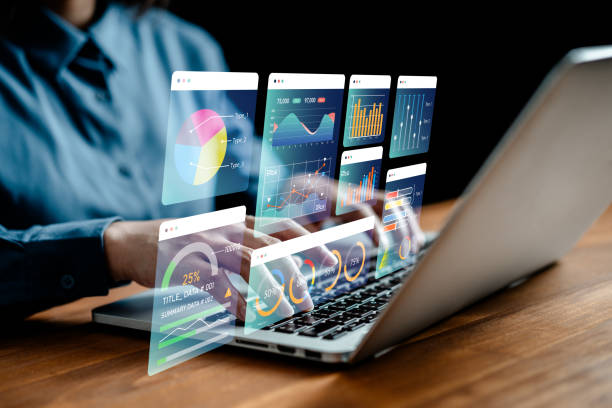
**On-Page SEO** is an ongoing process, and after taking initial steps, you should regularly monitor and analyze your results. By monitoring and analyzing the results, you can identify the strengths and weaknesses of your strategy and take the necessary actions to improve it.
To monitor and analyze **On-Page SEO** results, you can use tools like Google Analytics and Google Search Console. Google Analytics gives you information about site traffic, user behavior, and conversion rate. Google Search Console gives you information about site performance in search results, keywords that users use to find your site, and technical problems on the site. Using this information, you can evaluate the performance of your **On-Page SEO** and make better decisions to improve it.
Regularly check the ranking of your keywords and measure your site’s organic traffic. Monitor the bounce rate and the length of time users spend on your site. Pay attention to technical problems on the site, such as 404 errors and broken links, and fix them. By monitoring and analyzing **On-Page SEO** results, you can optimize your strategy and achieve better results. Remember that **On-Page SEO** is a long-term investment and requires patience and perseverance. Optimize your website’s **On-Page SEO** using this method.
#### Frequently Asked Questions
“`html
| Row | Question | Answer |
|---|---|---|
| 1 | What is On-Page SEO? | On-Page SEO refers to the set of actions that are performed within the website (on its pages) to improve the site’s ranking in search engine results. This includes optimizing content, site structure, and HTML codes. |
| 2 | Why is On-Page SEO important? | On-Page SEO helps search engines better understand the content of the page and determine whether that page is relevant and valuable to users’ searches. This better understanding leads to a higher ranking. |
| 3 | What is the first and most important step in On-Page SEO? | Keyword Research is the most important initial step. By finding the right keywords, you can produce targeted content that is relevant to users’ needs. |
| 4 | What is the role of the Title Tag in On-Page SEO? | The title tag is one of the most important ranking factors and should include the main keyword. This tag is displayed in search results as the title of the page and affects the click-through rate (CTR). |
| 5 | What is the importance of Meta Description? | Meta Description does not directly affect ranking, but by providing an attractive summary of the page content in search results, it can encourage users to click and, as a result, increase the click-through rate (CTR). |
| 6 | Why is the use of headings (H1, H2, etc.) important in content? | Headings help structure content and improve readability for users and search engine crawlers. Using keywords in headings also helps the search engine better understand the topic. |
| 7 | What does Image Optimization in On-Page SEO include? | Includes compressing images to reduce size, using descriptive and relevant file names, and filling the Alt tag (alternate text) with relevant keywords to help search engines understand the content of the image. |
| 8 | What is meant by Internal Linking in On-Page SEO? | Internal linking refers to creating links between different pages of a website. This helps distribute page equity (Link Equity), improves the user experience, and helps search engine crawlers discover new pages. |
| 9 | Why is Page Speed important for On-Page SEO? | Page loading speed is a direct ranking factor and greatly affects the user experience. Slow pages can increase bounce rate and decrease user engagement. |
| 10 | What role does quality content play in On-Page SEO? | Quality content that is comprehensive, unique, and valuable to the user is the core of On-Page SEO. This content not only attracts and retains users, but also sends positive signals to search engines and helps to improve ranking. |
“`
**And other advertising services of Rasa Web Advertising Agency**
**Intelligent Marketing Automation: Professional optimization for digital branding using attractive UI design.**
**Intelligent Custom Software: A combination of creativity and technology for digital branding through user experience customization.**
**Intelligent Marketing Automation: A dedicated service to grow user engagement based on precise audience targeting.**
**Intelligent Direct Marketing: A combination of creativity and technology to attract customers through a content strategy focused on SEO.**
**Intelligent Link Building: Professional optimization for online growth using Google Ads management.**
**And more than a hundred other services in the field of internet advertising, advertising consulting and organizational solutions**
**Internet Advertising | Advertising Strategy | Advertorial**
To shine in the digital world and reach the pinnacle of success, Rasaweb Afarin Digital Marketing Agency accompanies you by providing comprehensive services, including professional website design and SEO, to bring your business to the position it deserves.
📍 Tehran, Mirdamad Street, next to the Central Bank, South Kazerun Alley, Ramin Alley No. 6
#### Resources
On-Page SEO Optimization with Semrush
,Ahrefs On-Page SEO Guide
,Moz On-Page SEO Tutorial
,Search Engine Journal On-Page SEO




